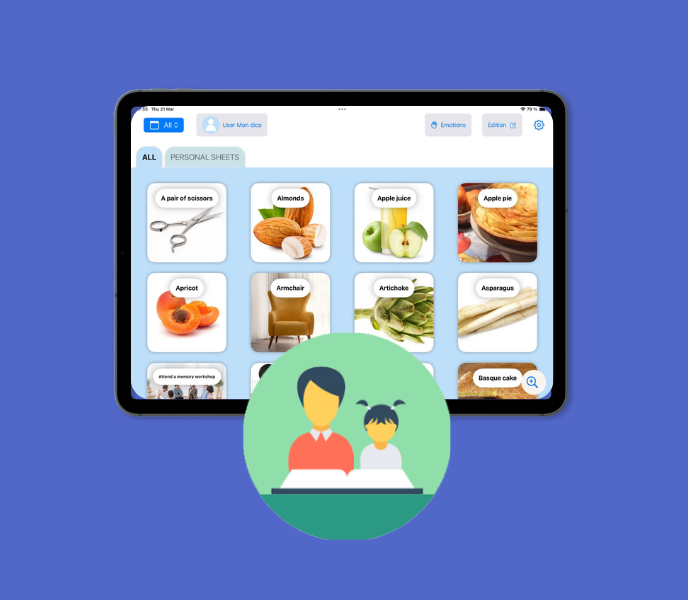Daily routines play a crucial role in the lives of individuals with special needs. These routines provide structure and predictability, which can greatly benefit their overall well-being. By establishing and maintaining daily routines, they can experience improved behavior, reduced anxiety, and enhanced communication skills. In this article, we will explore the importance of creating effective daily routines for special needs individuals and provide tips on how to create effective routines that cater to their unique needs and abilities.
Understanding the Importance of Creating Effective Daily Routines
For them, routines can provide a sense of structure and predictability in their lives. This is particularly important as it helps them navigate through their daily activities with a sense of familiarity and comfort. Routines can help reduce anxiety by eliminating uncertainty and providing a clear sequence of events.
Moreover, routines can also have a positive impact on behavior. When these individuals know what to expect and have a clear understanding of what is expected of them, they are more likely to exhibit appropriate behavior. Routines can help establish boundaries and expectations, which can lead to improved self-regulation and reduced behavioral challenges.
Identifying the Unique Needs and Abilities of Each Person
It is essential to recognize that each individual has unique needs and abilities. Therefore, it’s crucial to create individualized routines that cater to their specific requirements. To identify these needs and abilities, it is important to observe and assess the individual’s strengths, preferences, and challenges.
One way to identify these needs is by observing the individual’s behavior in different situations. Pay attention to what activities they enjoy or find challenging, as well as any triggers that may cause anxiety or meltdowns. Additionally, communicate with caregivers, therapists, and educators who work closely with the individual to gain insights into their abilities and areas for improvement.
Creating a Structured Daily Schedule
Structure is key when it comes to creating effective daily routines for individuals with special needs. A structured daily schedule provides a clear framework for the day, helping individuals understand what is expected of them and what activities they will be engaging in.
When creating a daily schedule, it is important to establish consistent wake-up and bedtime routines, as well as set meal times. This helps regulate the individual’s internal clock and promotes a sense of stability. Additionally, allocate specific time slots for activities such as therapy sessions, educational activities, leisure time, and self-care tasks.
For example, imagine a child with autism spectrum disorder (ASD) who thrives on routine. Their daily schedule may include waking up at 7:00 a.m., followed by breakfast at 7:30 a.m. After breakfast, they engage in structured educational activities, such as learning sessions with a therapist or specialized teacher.
These activities are scheduled for specific durations, with breaks in between to prevent fatigue and maintain focus. Lunchtime is consistent, occurring at the same time each day, followed by a period of free play or sensory activities tailored to the child’s needs.
In the afternoon, the schedule may include additional therapy sessions or socialization opportunities, such as playdates with peers or participation in organized group activities. As evening approaches, a consistent bedtime routine helps signal to the child that it is time to wind down and prepare for sleep.
And what activities for this routine?
This routine may involve activities such as bath time, reading a bedtime story, and dimming the lights to create a calming environment conducive to sleep.
By adhering to a structured daily routine, they can experience a sense of predictability and security, which in turn fosters independence and confidence. Moreover, structured routines help caregivers and support professionals effectively manage the day-to-day needs of them, ensuring that each activity is purposeful and contributes to their overall well-being.
In conclusion, creating daily routines tailored to the unique needs of these individuals is essential for promoting stability, independence, and overall quality of life. By incorporating consistent schedules, designated activities, and supportive strategies, caregivers can empower individuals with special needs to thrive and reach their full potential.
Incorporating Sensory Activities into Daily Routines
In crafting daily routines for individuals with special needs, sensory activities play a pivotal role. These activities serve as vital tools for sensory regulation and offer avenues for exploration and self-expression.
To begin with, sensory activities encompass a wide range of experiences that engage the five senses. For instance, tactile experiences like playing with textured materials such as clay or sand can provide valuable sensory input. Similarly, auditory stimulation through activities like listening to calming music or engaging in rhythmic drumming can help individuals regulate their sensory systems.
Moreover, movement-based activities offer another avenue for sensory exploration. Activities such as swinging, jumping on a trampoline, or engaging in yoga poses provide proprioceptive and vestibular input, helping individuals develop body awareness and balance. These activities can be seamlessly integrated into daily routines to provide regular opportunities for sensory exploration and regulation.
And what more?
Incorporating scented objects or aromatherapy into daily routines can offer olfactory stimulation, which can have a calming or invigorating effect depending on the individual’s preferences and needs. For example, diffusing lavender essential oil during relaxation activities or incorporating scented playdough during sensory play sessions can enhance the overall sensory experience.
By weaving sensory activities into daily routines, caregivers can create environments that promote sensory regulation and engagement for individuals like them.
Whether it’s starting the day with a calming sensory activity, incorporating movement breaks throughout the day. It can be also winding down with soothing sensory experiences before bedtime, integrating sensory activities into daily routines. All of this can help individuals feel more grounded, focused, and connected to their surroundings.
In conclusion, creating daily routines that prioritize sensory activities is essential for them. By incorporating a variety of sensory experiences tailored to their preferences and sensitivities, caregivers can support sensory regulation, exploration, and self-expression, ultimately enhancing their overall well-being and their quality of life.
Using Visual Aids to Enhance Understanding and Communication

Visual aids are powerful tools that can enhance understanding and communication for individuals with special needs. These aids can include visual schedules, social stories, visual cues, and visual timers.
Visual schedules provide a visual representation of the day’s activities, helping individuals understand the sequence of events and what is expected of them. Social stories use pictures and simple language to explain social situations or expectations, helping individuals navigate social interactions. Visual cues can be used to prompt individuals to perform specific tasks or follow certain rules. Visual timers help individuals understand the concept of time and manage their time effectively.
Establishing Consistent Meal Times and Nutritious Eating Habits
Consistent meal times and nutritious eating habits are essential for these individuals. Regular meal times help regulate their appetite and energy levels throughout the day. It is important to establish a routine where meals are served at the same time each day.
Additionally, it is crucial to provide nutritious meals and snacks that cater to the individual’s dietary needs. Consult with a healthcare professional or nutritionist to ensure that the individual’s nutritional requirements are being met. Encourage healthy eating habits by involving the individual in meal preparation and providing a variety of nutritious food options.
Incorporating Exercise and Physical Activity into Daily Routines
Exercise and physical activity play a crucial role in their well-being. By promoting physical health and enhancing motor skills, these activities contribute to overall health and happiness. Therefore, it is imperative to integrate regular exercise and physical activity into daily routines.
A variety of activities can be included in daily routines to promote physical fitness. Options such as walking, swimming, dancing, yoga, or playing sports offer diverse opportunities for movement and engagement. It’s essential to tailor these activities to the individual’s abilities and preferences, ensuring they are both enjoyable and accessible.
A person with autism may find comfort and enjoyment in swimming due to the calming sensory experience of water for example. Another individual with Down syndrome may prefer structured activities like yoga, which can improve flexibility and coordination while providing a sense of routine and stability.
Physical activities to create effective daily routines:
Encouraging participation in physical activities involves making them enjoyable and engaging. Incorporating elements of play and fun can motivate individuals to participate more eagerly. For instance, turning a walk into a scavenger hunt or incorporating dance moves into a game can make exercise feel less like a chore and more like a pleasurable activity.
Additionally, sensory elements can enhance the exercise experience for individuals with special needs. Using textured equipment, such as therapy balls or resistance bands, adds tactile stimulation and can make exercises more engaging. Similarly, playing music during physical activities can provide auditory input and create a lively atmosphere, motivating individuals to stay active and focused.
In summary, integrating exercise and physical activity into daily routines is essential for them. By offering a variety of enjoyable activities tailored to their abilities and preferences, caregivers can promote physical health, improve motor skills, and enhance overall well-being. Creating daily routines that prioritize physical activity ensures that individuals with special needs receive the benefits of regular exercise, leading to a healthier and happier lifestyle.

Creating Effective Sleep Patterns and Daily Bedtime Routines
Developing effective sleep patterns or creating effective daily routines for bedtime is crucial for them. Quality sleep is essential for their overall well-being and can greatly impact their behavior and cognitive functioning.
Establish a consistent bedtime routine that includes calming activities such as reading a book, taking a warm bath, or listening to soothing music. Create a sleep-friendly environment by ensuring the bedroom is dark, quiet, and comfortable. Limit screen time before bed as it can interfere with sleep quality. Consult with a healthcare professional if the individual is experiencing sleep difficulties.
Addressing Behavioral Challenges with Positive Reinforcement and Consequences
Behavioral challenges are common among individuals with special needs, but they can be effectively addressed through positive reinforcement and consequences. Positive reinforcement involves rewarding desired behavior to encourage its repetition. This can include verbal praise, tokens, or privileges.
Consequences should be used to address inappropriate behavior in a fair and consistent manner. Consequences should be logical and related to the behavior, such as loss of privileges or time-out. It is important to communicate expectations clearly and provide individuals with special needs with opportunities to learn and practice appropriate behavior.
Adjusting Daily Routines as Needed to Meet Changing Needs and Goals
Flexibility is key when we talk about creating effective daily routines. As their needs and goals change over time, it is important to adjust their routines accordingly. Regularly assess the effectiveness of the current routine and make necessary adjustments.
Communicate with caregivers, therapists, and educators to gain insights into any changes in the individual’s needs or abilities. Be open to trying new strategies and approaches that may better meet their evolving needs. Regularly review and update the daily schedule to ensure it remains relevant and effective.
In conclusion, daily routines play a crucial role in the lives of people with special needs. These routines provide structure, predictability, and a sense of familiarity, which can greatly benefit their overall well-being. By creating individualized routines that cater to their unique needs and abilities, they can experience improved behavior, reduced anxiety, enhanced communication skills, and a better quality of life. It is important to implement these routines consistently and make adjustments as needed to ensure their effectiveness.
MY DICO
My Dico is an app developed by Dynseo that includes various features. The app, available on IOS devices is adapted for people with special needs like non-verbal individuals. The user will have access to a visual Dictionary to express its thoughts and needs, an Emotions window and a Routines window with sequencing and games to learn them. My Dico has been created in order to be the daily live’s communication and autonomy assistant for people with linked impairments.

Other articles that might interest you:
How Parents Can Contribute to Teacher Training
As we delve into the realm of education, it becomes increasingly clear that teacher training is not merely a...
Differentiated Instruction Approaches: Training and Practical Application
Differentiated instruction is a pedagogical approach that recognizes the diverse needs of students in a classroom. It...
Key Skills Teachers Need to Support Students with Special Needs
As we embark on our journey to support children with special needs, it is essential for us to cultivate a deep...







